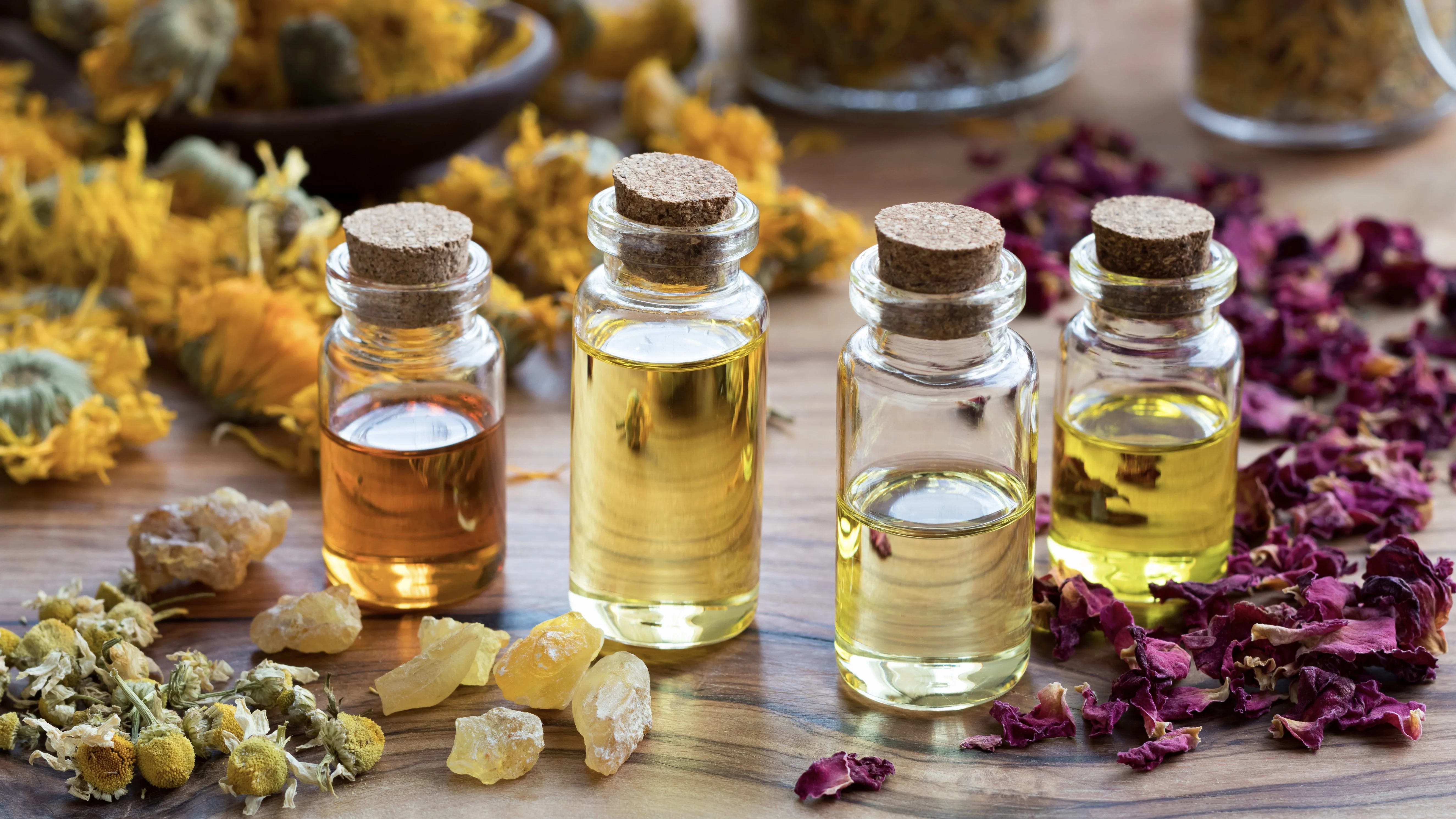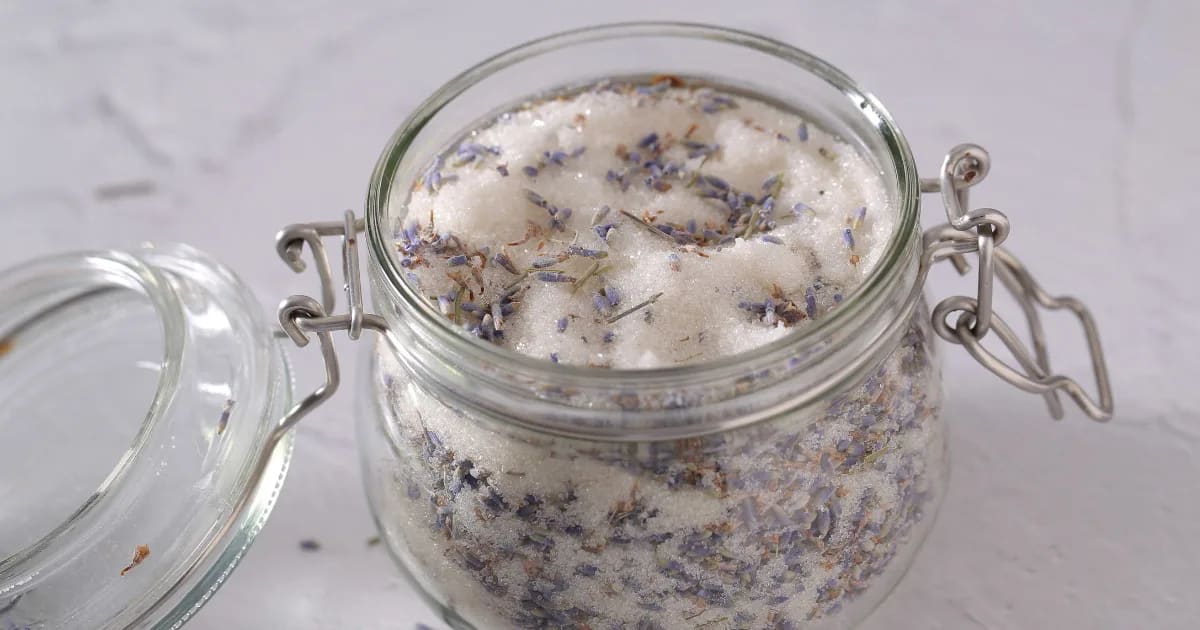Essential Oils for Knees: Coriander Knee Gel Recipe!

The molecule linalool makes Coriander one of my top essential knee oils!
When using essential oils for your knees, you want something fast-acting with reliable pain-relieving effects.
In this recipe, four essential oils for knees come together to soothe inflammation, while aloe vera gel helps them absorb quickly into achy joints.
Coriander essential oil for knees!
I chose Coriander as the main essential oil for this knee gel.
Coriander is one of my favorite oils for pain relief—especially blends meant to be used over a more extended period (which knee pain often requires). That's because it contains a high percentage of linalool.
Linalool is a natural monoterpenol component that's been shown to reduce inflammation in joints, muscles, skin, and other areas. It's potent but gentle, so it won't cause skin irritation if applied regularly to the same area.
You'll learn how the other oils in this blend support Coriander's actions below. First, let's get to the recipe!
Coriander Gel for Happy Knees
1 oz (28 g) Aloe vera gel (Aloe barbadensis)(A little less than 1 ounce)
3 ml Solubol (dispersant)
8 drops Coriander essential oil (Coriandrum sativum)
4 drops Cape Chamomile essential oil (Eriocephalus punctulatus)
3 drops Ginger essential oil (Zingiber officinale)
3 drops Juniper Berry essential oil (Juniperus communis)
Directions
Combine the aloe vera gel and Solubol in a 1 oz (30 ml) bottle. Add the essential oils and shake well.
The Solubol will help keep the essential oils distributed through the aloe vera gel (a water-based carrier), but you'll still want to give this blend a nice shake before each use.
Apply it to your knees as needed (pun intended)!
This recipe has an excellent combination of relaxing and energizing oils, so it's suitable for night and day. But a great thing about aromatherapy is that you can customize your blends based on your desired emotional effects. For example, if you're looking for a calming recipe to help you sleep, try this blend of essential oils for your knees that can help you relax.
And if you don't have Cape Chamomile, German Chamomile (Matricaria recutita) makes an excellent substitution!
Let's discuss the other essential oils for the knees in this recipe.
Cape Chamomile essential oil
Eriocephalus punctulatus
Like its "cousin" German Chamomile, Cape Chamomile is excellent for soothing sore joints and being gentle on the skin. It encourages comfortable, easy knee movement that might otherwise feel too sore to move freely.
This is likely due to its high percentage of calming esters.
Ginger essential oil
Zingiber officinale
Rich in sesquiterpenes, Ginger oil helps reduce inflammation in joints and muscles.
It also gets the fresh circulation flowing to the area where you apply it. This creates a comforting warm sensation. Ginger's "warm pain relief" effect has made it a popular essential oil for knees!
Juniper Berry essential oil
Juniperus communis
Juniper Berry is chock-full of soothing monoterpene molecules!
The most prominent is α-pinene, shown in numerous studies to calm inflammation. Juniper Berry also works with Ginger to stimulate circulation, ushering tight, constricted energy out of sore joints.
REFERENCES
Akkol, E.K., Güvenc, A. and Yesilada, E. (2009) A comparative study on the antinociceptive and anti-inflammatory activities of five Juniperus taxa. Journal of Ethnopharmacology 125, 2, 330-336
Carrasco, F.R., Schmidt, G., Romero, A.L., Sartoretto, J.L., Caparroz-Assef, S.M., Bersani-Amado, C.A. and Cuman, R.K.N. (2009) Immunomodulatory activity of Zingiber officinale Roscoe, Salvia officinalis L. and Syzygium aromaticum L. essential oils: evidence for humor- and cell-mediated responses. Journal of Pharmacy and Pharmacology 61, 7, 961-967
Guimarães AG, Quintans JSS, Quintans-Júnior LJ. (2013) Monoterpenes with analgesic activity – a systematic review. Phytotherapy Research 27,1-15
Peanna, A.T., D'Aquila, P.S., Panin, F., Serra, G., Pippia, P. and Moretti, M.D. (2002) Anti-inflammatory activity of linalool and linalyl acetate constituents of essential oils. Phytomedicine 9, 721-726
Reuter J, Huyke C, Casetti F, Theek C, Frank U, Augustin M, Schempp CM. (2008) Anti-inflammatory potential of a lipolotion containing coriander oil in the ultraviolet erythema test. Journal der Deutschen Dermatologischen Gesellschaft 6, 847-851





